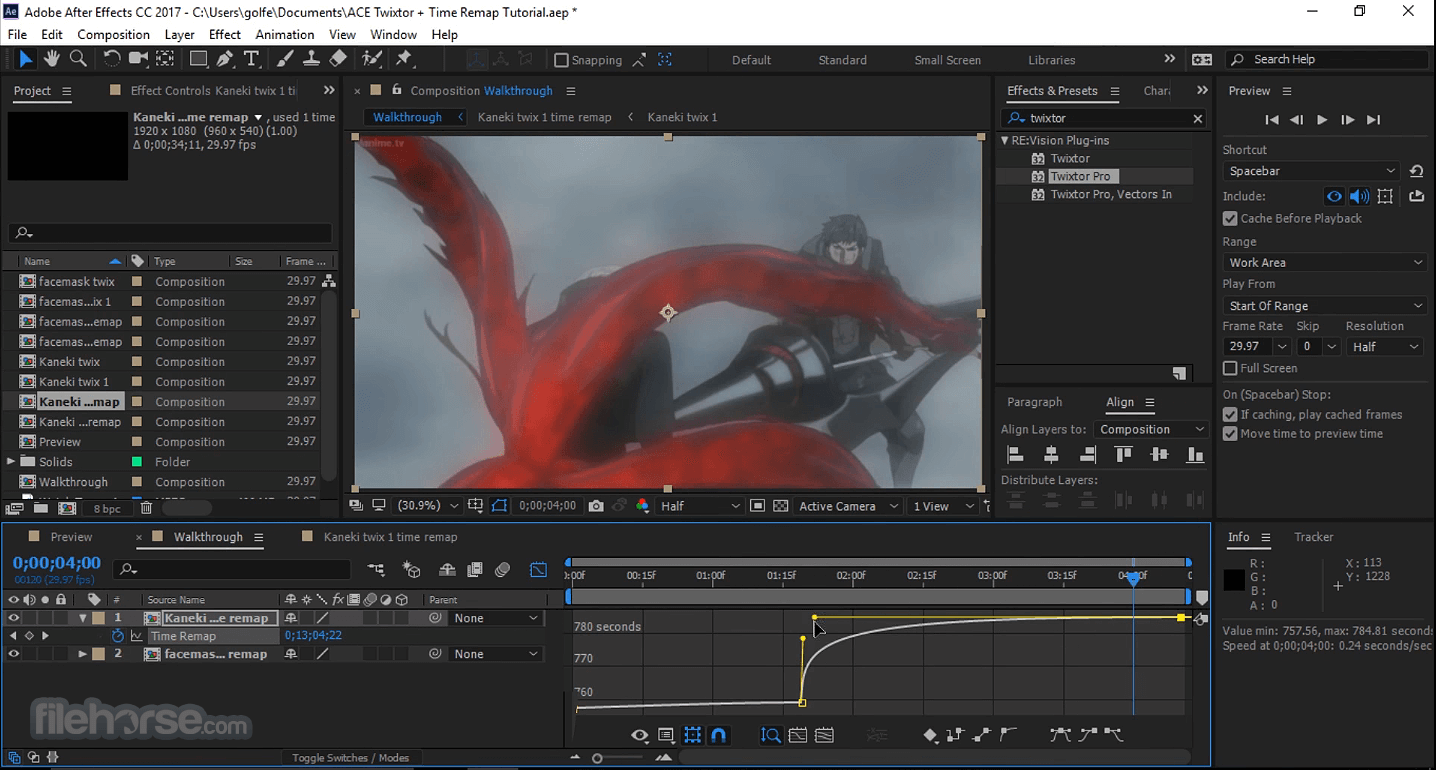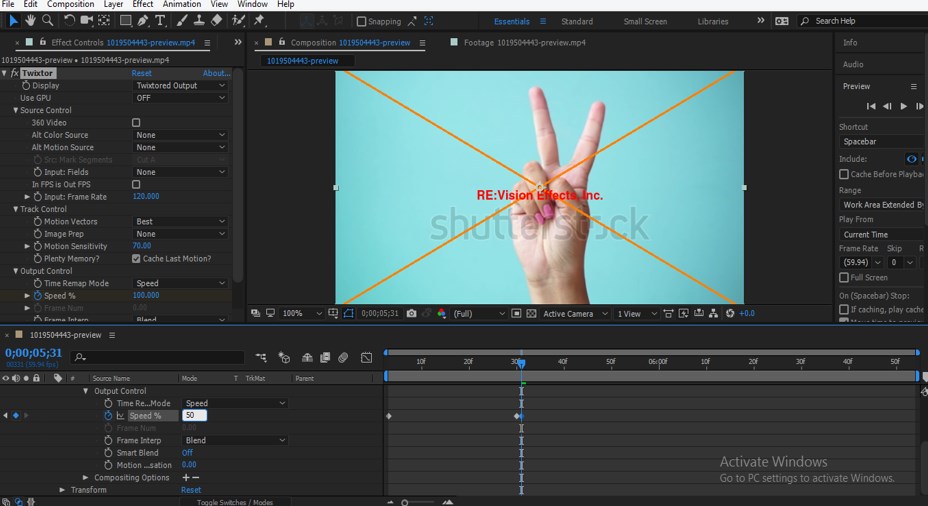Twixtor blends frames and uses vectors for the movement, so don't expect to get a super slow motion like in the show 'Time Warp' for example. If your footage is not detailed, it will stay this way after applying Twixtor, so try to film as detailed as possible. Step 5: Night shots are a bad idea. Twixtor is a Shareware software in the category Miscellaneous developed by revisionfx. It was checked for updates 31 times by the users of our client application UpdateStar during the last month. The latest version of Twixtor is 7.0.2, released on. NCAA Football tickets are on sale now at Stubhub. Buy and sell your NCAA Football tickets today. Tickets are 100% guaranteed by FanProtect. Twixtor will not give you as good results as a dedicated high speed camera of course. They do that job incredibly well. You need to light a lot to make them work but as you will read below you need to do the same with twixtor to get the high shutter speeds needed.
2015-10-26Both Twixtor and Resolve's own optical flow work much better if you already have some slo-mo from the camera and short exposure times. While Gigapixel is great, Resolve's SuperScale does a pretty decent job for 1:2.
While Twixtor may not be able to produce the same results as a dedicated high speed camera, they still do an incredible job. Twixtor is even compatible with Go Pro footage! You will need a lot of light to make them work, which is also important when trying to get the high shutter speeds needed with Twixtor. If your budget means that you will not be renting a Phantom Flex anytime soon, Salomon is here to help you make the most out of this powerful, but rather tricky plug-in.
Created with Twixtor

Slow Motion BMX
Twixtor has definitely raised the bar in motion estimation. Thanks to its improved accuracy, ability to track objects farther, and fewer artifacts when objects cross in a scene, there is less stretching and tearing of objects as they cross or go out of the frame.
Slow Motion Parkor
Twixtor gives you the ability to speed up, slow down, or frame rate convert your image sequences with amazing visual results. To achieve this unmatched image quality, Twixtor synthesizes unique new frames by interpolating and warping frames from the original sequence. They utilize RE:Vision’s trademarked tracking technology that calculates motion on each individual pixel.
How Twixtor Works
Twixtor takes your footage (usually your transcoded 50 fps or 60 fps) footage and interpolates (guesses) your missing frames. As a result, I have learned that when working with Twixtor, I have to be especially aware of how I’m shooting to ensure I have workable footage in post.
Recently, I have decided to try something other than the Twixtor stuff that I have seen shot outdoors. My goal is to try shooting super slo-mo using Twixtor and the Canon 7D in
Twixtor is compatible with all of the latest video editing software
interior shots.
Here are a few of the most important things to consider when working with Twixtor.
Twixtor Plugin
- Shoot at a fast shutter; anything 1/2000 – 1/4000. This means your lighting needs to be good.
- Use a solid colored/ plain backdrop.
- Shoot at the highest point of action. For Twixtor, the movement at the top of the arc works best because this is when things tend to move the slowest, which gives Twixtor more frames of relevant action to work with.
- If you are shooting closely or tightly, manually slow down the action by moving slow and faking slow motion. (Incidentally, this is how the fight sequences were filmed in “Gravity”.) When action is shot from a distance, you get better results with Twixtor. This is because the action happens across more frames. For example, if you stand about 20 inches in front of the camera and move your arms up and down, the camera will only capture some of the action, when your arms pass by the front of the lens (maybe 1-3 frames). However, if you move about 50 ft. from the lens, you catch almost the entire action (maybe 7-10 frames), which gives Twixtor more to work with.
- Shoot at 50 or 60 fps. Shooting at a high-speed gives Twixtor more to work with.
- Shoot as much as you can. Try to get action from different angles. If your setting weren’t correct, film it again. Shoot too much, not too little.
Post Workflow for Twixtor
- Use Twixtor in After Effects, which just seems to work better. Here’s what I do:
l Edit the entire thing in an NLE (non-linear editor, such as final cut). I leave sections in the timeline open or reference clips that I want to work with in After Effects. At this point, you can’t do too much in FCP because you’re going to be playing with time changes, which can really mess things up if you aren’t careful.
l Using an XML script called Popcorn Island FCP to AE, I move the entire piece to After Effects. (To export an XML from FCP, go to File > Export > XML. For format, click Apple XML, Interchange Format, Version 5.)

l Open AE and go to scripts. Search for FCPtoAE. Pull up the exported XML.
Twixtor Free

Twixtor Download
l Now, click on the clip you want to use Twixtor on. To do this, from Menu, go to Layer > Time > Enable Time Remapping.
This gives you the ability to extend a clip out longer, which is important because when you start slowing things down, the clip needs to become longer. You can easily do this by enabling time remapping. Simply pull out the edges using drag function on the clip.
- Make sure your Twixtor settings match your footage. If your frame rate isn’t correct, Twixtor will stutter across your footage.
l I usually shoot and edit in 23.976fps because I prefer the film aesthetic.
l I have found that manipulating the image to a slower speed (anything between 2 and 5%) yields better results than trying to get something workable at 30%. I’m not really sure why, but I think it may have something to do with the fact that with many more frames created, it is able to use these created forms to reference from when creating “interpolated/ guessed” frames.
- Consider using an aspect matte to hide any warping. I tend to use an aspect ratio of 2:4:1 in my work because a lot of my warping tends to occur at the edges of my shots. Thankfully, a matte hides the bad sections. For example, in a short I shot called [Fo’tis’ma], my friend Franzwa was taking off from a ledge. (It’s a tight shot, slightly angled down at 34s.) The warping was REALLY bad, especially because the shot was tight and he was coming down fast. Since the shot was not working at 16:9, I opted to make the entire piece 2:4:1.
- Avoid warping by editing well. Many times Twixtor only works for a few frames to keep things from looking crappy in the end. (When this happens, I’ll use it for a few frames and then cut to the next image.) If a shot started off good, but ended up turning into mush at the end, don’t hang on to it. The moral of the story is EDIT WELL.
